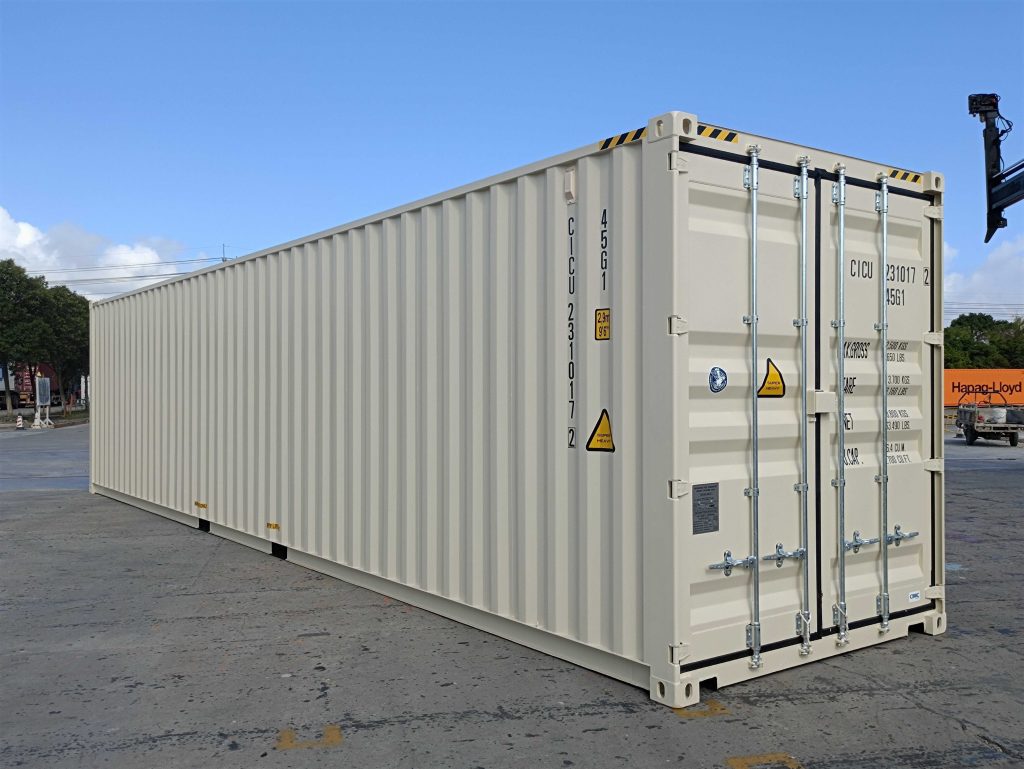Need Inspiration? Look Up New Shipping Containers

New Shipping Containers: Revolutionizing the Logistics and Supply Chain Industry
Shipping containers have ended up being the backbone of global trade, enabling the efficient transport of items throughout countries and continents. As logistics and supply chain needs evolve, so too do shipping containers. This article will check out the significance of new shipping container designs, innovations, and their impact on the market.
The Evolution of Shipping Containers
Shipping containers have actually come a long way because their beginning in the 1950s. Initially made from steel, the design has expanded to include numerous products, sizes, and performances to fulfill growing demands for efficiency, security, and sustainability.
Secret Innovations in New Shipping Containers
| Innovation | Description | Advantages |
|---|---|---|
| Refrigeration Technology | Advanced insulation and cooling systems. | Perfect for disposable products, extending life span. |
| Smart Containers | Geared up with GPS tracking, temperature level sensing units, and RFID innovation. | Real-time monitoring of cargo conditions and location. |
| Green Containers | Made from sustainable products and created for energy effectiveness. | Decreased carbon footprint and ecological impacts. |
| Modular Containers | Permits versatile reconfiguration for diverse cargo types and sizes. | Increased adaptability and optimized space utilization. |
| High Cube Containers | Taller than standard containers, providing more volume within the exact same footprint. | Greater storage capacity for extra-large cargo. |
Kinds Of New Shipping Containers
New shipping containers come in numerous types, each engineered for particular transport requirements. Here's a list of the most typical types:
- Standard Dry Containers: The most common type, used for general cargo.
- Reefer Containers: Temperature-controlled containers for disposable goods.
- Open Top Containers: Designed for extra-large cargo that can not fit through standard doors.
- Flat Rack Containers : Used for heavy loads or devices that need to be protected from above.
- Tank Containers: Specialized for carrying liquids, such as chemicals and food items.
- High Cube Containers: Providing extra vertical space for bulkier products.
Advantages of Using New Shipping Containers
Using new shipping containers provides numerous advantages to companies and the supply chain. Some advantages consist of:
- Enhanced Security: Modern containers are built with sophisticated locking systems, minimizing the danger of theft and damage.
- Increased Efficiency: Smart containers permit for real-time tracking, improving logistics management and lowering delays.
- Sustainability: Innovations in materials and energy efficiency help minimize the environmental effect of shipping activities.
- Cost-Effectiveness: Reducing waste and optimizing cargo area reduces transport costs in time.
- Adaptability: Different container types and setups deal with a wide variety of industries and products.
The Impact of New Shipping Containers on Global Trade
The intro of new shipping containers has actually drastically affected worldwide trade practices. According to a report by the Global Maritime Forum, the effectiveness gains from the adoption of new shipping containers have lowered shipping times by approximately 30% sometimes. Additionally, the growth in e-commerce has increased the need for numerous shipping container types, resulting in innovation and competition among shipping business.
| Metric | Pre-New Shipping Containers | Post-New Shipping Containers |
|---|---|---|
| Average Shipping Time | 4-6 weeks | 2-4 weeks |
| Cargo Damage Rate | 10% | 2% |
| Fuel Efficiency | Differs | As much as 10% savings |
| Cost Per Shipment | ₤ 2000 | ₤ 1500 |
| Carbon Footprint (Estimated) | High | 20% lower |
Often Asked Questions (FAQs)
Q1: What materials are modern-day shipping containers made from?A1: Modern shipping containers are mainly made from high-strength steel however can likewise incorporate new materials like fibreglass and environmentally friendly composites. Q2: How can I track my cargo with a new shipping container?A2: Many new shipping containers come geared up with clever technology that includes GPS tracking and RFID. These enable carriers to monitor the place and condition of the cargo in real-time. Q3: What kinds of cargo advantage most from refrigerated containers?A3: Perishable items such as fruits, veggies, dairy, meat, and pharmaceuticals benefit significantly from refrigerated containers, offering the needed temperature control to keep item integrity. Q4: Are there any ecological guidelines surrounding using shipping containers?A4: Yes, various global regulations govern emissions from shipping and the materials used in container construction.
The International Maritime Organization(IMO) promotes cleaner shipping by introducing policies for carbon emissions, motivating the usage of green containers. Q5: Will new shipping container innovation result in higher shipping costs?A5: While preliminary investment in new technology may be greater, the effectiveness acquired from minimized shipping times, lower cargo damage rates, and enhanced fuel consumption often lead to
total cost savings for business gradually. The shipping container industry is going through a vital transformation, with developments leading the way for a more efficient, safe, and sustainable future. By comprehending the advancements and kinds of containers offered, organizations can make informed choices that
boost their supply chain operations. As the international marketplace continues to grow, so does the need for transport solutions that fulfill modern demands. The development of new shipping containers is not just a trend; it's an essential element of the logistics and supply chain landscape.

